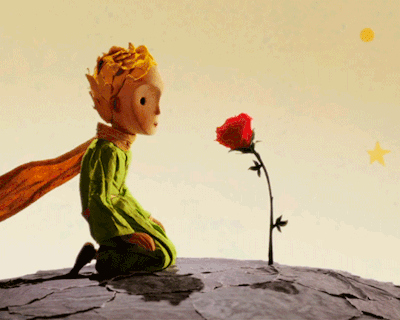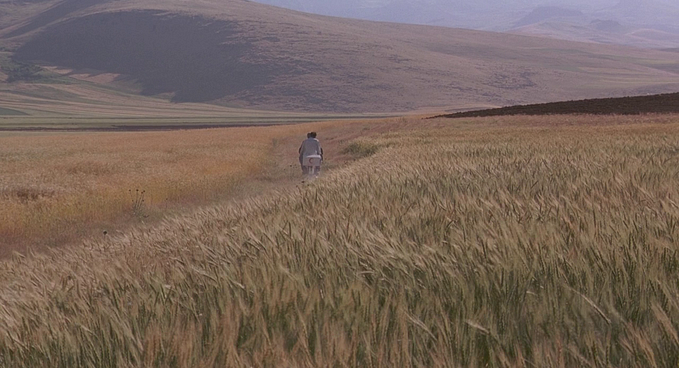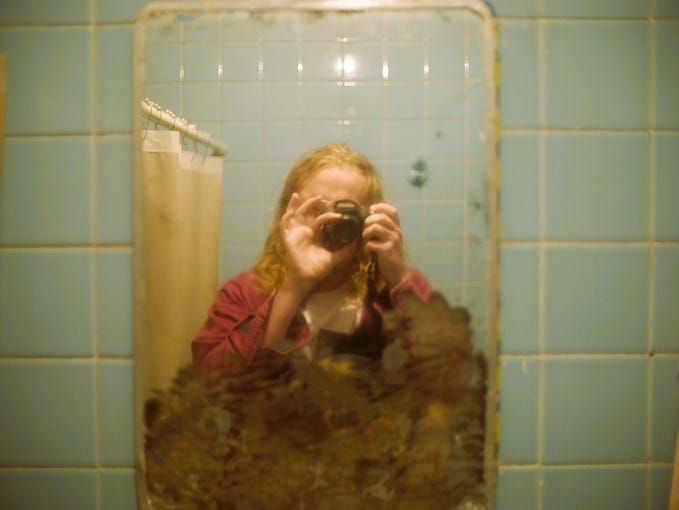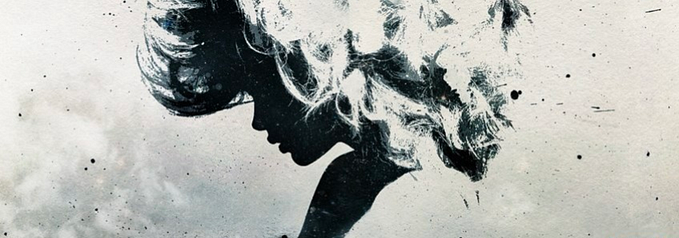Art, Insanity, Wine- And Dionysus

Dionysus. The Greek patron god of harvest, wine, ivy, and most importantly- art and madness. Born to the god Zeus and the mortal Semele, his characterization has shifted through the centuries from Mycenean Greece to the Hellenistic god we know today: the previous characterization of him being far more demonic, far more dangerous and of course: far more insane. In fact, Euripedes’ Bacchae (refers to Dionysus even if Bacchus is the Roman characterisation) describes the killing of Pentheus by women whipped by Dionysus into a bacchic frenzy. To the lower classes of Greek society such as women and slaves, the partaking of wine and subsequently getting drunk resembles this Dionysian madness and was believed to connect them to a higher power and attain knowledge. Moreover, the cults of Dionysus presented a release from the rational troubles of their society and condition- which in our day and age, art provides. And therefore, we arrive at BTS’ track ‘Dionysus’: their patronage of art through the creation of music, literary references, the CONNECT, BTS project for modern art, and how they become Dionysus themselves in the process.

I. LYRICS
“It (Greek tragedy) originated in a form of a choral song, the dithyramb, a song in honour of the god Dionysus.” — Aristotle, Poetics.
BTS begin the song with the phrase ‘drink it up’, which has two meanings: of the consumption of art, and of art consuming the individual in themselves, and the preparation towards achieving that consuming (‘glass, crossed arms, thyrsus, grapes, atmosphere’). The following words reflect the creative process and how these are essential in their success and creation. Here, art is being equated with wine- while Dionysus is the god of wine, BTS are stamping their claim on them being both the gods of art and in letting art be the god of them. RM’s verse further evidences this:
“Just get drunk like Dionysus/ a glass in one hand, a thyrsus in the other hand.”
In the aforementioned lyric, RM mentions the ‘thyrsus’: it’s the staff that Dionysus wields and uses to create waves of madness; and in later lyrics the thyrsus is equated to the mics that they hold as they perform and how they can create an whole atmosphere of art with their music. The rapper also mentions the phrase ‘art is also alcohol’: using the wordplay of ‘예술’ and ‘술’, he refers to the wildness of art. Dionysian cults used wine to hallucinate and therefore enter a stage of ‘insanity’ and ‘irrationality’ and here, BTS affirms that art, in the process of creation, consumes a part of them too and helps them to enter a stage of the same ‘wildness’ to better understand themselves as humans.

The pre-chorus reinforces the pain that creation involves, and tells the artist to keep engaging with artforms, the word ‘drink’ becoming an allusion to enduring trails (‘the pain of creating/ the scolding of the age/ the communication with myself’), which ends in art being made.
“All drink, drink, drink, drink my glass, ay
All fall, fall, fall for a mad artist
One glass (one shot), two glasses (two shots)
Drunk in art, sing ongheya/ Striking a kkwaenggwari, sing ongheya.”
The chorus holds a simultaneous sense within itself: it describes both the consumption of art by people and the consumption of people by art. The second line, ‘all fall, fall, fall for a mad artist’, is a reference to Plato, who is said to have criticized poetry and by extension art- calling it highly emotional and therefore irrational and disruptive to the ancient Greek society. However, people would still gravitate towards the cathartic release that alcohol and art gives them. Embracing the irrationality of art to release oneself from all bounds and achieve catharsis. The last lines refer to Korean harvest festivals- ‘ongheya (옹헤야)’ being a phrase in folk music sung during harvests, and ‘Kkwaenggwari (꽹과리)’ being a traditional folk instrument used for the same.

In the next verse, BTS addresses the stage that they perform as the door (‘I’m at the door of the world now/ the loud cheers I hear as I step on the stage’) because that’s where their artform- performing -takes shape and becomes their sustenance, getting drunk in the feeling of the voices from their audience. Their ‘thyrsus’ is worn but they’re still performing, engaging with the drunken feel their art gives them. The next line is a repeated reference to the aspect of ‘born twice’ (‘it’s only now that I’m reborn’/ ‘we’re born twice’/ ‘an artist reincarnated’ in SUGA’s verse): not only to the mythical origins of Dionysus, but also alluding to the birth of art first in the mind (the vision of their creation) and then from their body (mediums such as music, singing, dance, painting, writing etc.). This is also reflected in the 2020 song ‘Black Swan’ through the quote:
“A dancer dies twice: once when they stop dancing, and this first death is even the more painful.”- Martha Graham, Black Swan Art Film.”
SUGA, in the bridge, mentions the following line, ‘at this level, art is like excessive drinking, excessive drinking, yeah/ but I’m still thirsty.’ This line refers to the thirst within an artist to chase the intoxication that art provides; ‘thirst’ becomes associated with alcohol and art, and is required to survive for creatives. Through this song, finally, BTS become Dionysus: they are purveyors of art, of its all-consuming nature, and the freedom it gives. They will never stop creating art even with their worn out thyrsus/mics, like a ‘mad artist.’
II. PERFORMANCE

Greek tragedies that were performed during the festival of Dionysia, with Dionysus as the patron, were very structured in nature. The actors here, with being individual characters, were also a part of a larger chorus who would come together at points to sing what were called ‘choral hymns’. Therefore, in the context of BTS, we can consider Dionysus to be a mass choral hymn in honour of not only Dionysus but by extension what he stands for: art. And indeed, certain structural aspects of the song do seem similar to a Greek tragedy: a prologue before the chorus, an agon with the members interacting, and a epode or conclusion.
Here, I will be referring to two performances: the Show Music Core performance(specifically, the Bangtan Bomb) and the Melon Music Awards (MMA) Special Performance.
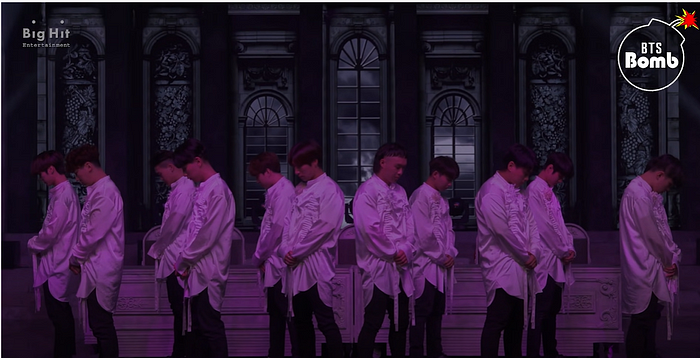
When we bring BTS to this context, the entire crew of dancers along with the members become a united ‘chorus’, performing as a unit together. The members are the ‘actors’ and therefore from the very first verses until the pre-chorus that is led by Jungkook, they break apart and perform their individual roles, with BTS taking the lead.


However, in the pre-chorus, Jungkook and J-Hope start singing from the left and slowly progress to the right with the inclusion of Jin’s verses. This is the ‘strophe’ and the ‘antistrophe’ of the play/ song: the chorus moving to the left (Jungkook and J-Hope’s parts) is a strophe, and the chorus moving to the right is the antistrophe (Jin’s part leading to the song’s chorus). And when the chorus of back up dancers and BTS come together in the center for the first time, that is referred to as an epode: within the structure of the song, the first chorus is the epode, an epic explosion of emotions. This sequence is repeated throughout, and with SUGA’s verse being the final concluding epode (all back up dancers being with him).

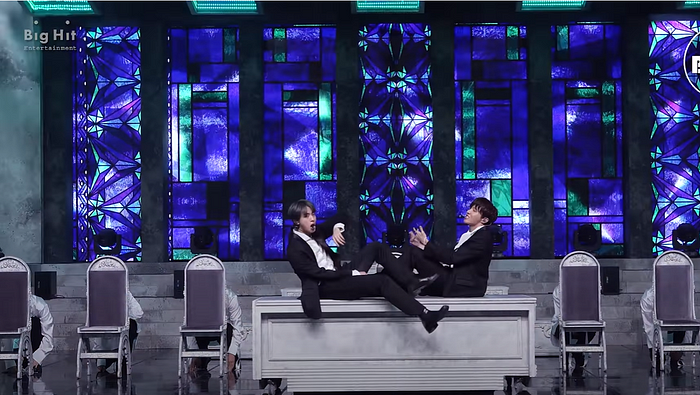


A point to be noted is that in between choruses, the parts where the members interact is known as the ‘agon’: a conversation, often philosophic in nature, occurs between the characters and this is seen when J-Hope, V and Jungkook interact in their verses. However, unlike the agon in tragedy, this is not antagonistic in nature.

Now, I would like to give special focus on the vibrant and majestic performance of Dionysus in the 2019 Melon Music Awards (MMAs) as this particular one is filled with references, and almost perfectly recreates the atmosphere of Greek dramatic representations. The very first scene introduces us to the chorus of back-up dancers, followed by solo performances by the BTS members. Each member represents a god in their own right, and are acting the parts of those gods as they’re wearing metaphorical ‘masks’ similar to that of Greek actors. The only difference is that, being creative people they are essences of the same god: Dionysus, and as the performances proceed the music becomes wilder and untamed, rising and falling until they come together, where ‘balance’ is achieved.



RM takes over as the chorus leader as he guides the entire chorus into the performance. The song continues to remain as structured as before; but the subtle difference comes at the end of SUGA’s verse: where balance was supposed to be present, more wild movements and loud, overlapping musical notes ensue. It subverts the very reason for art- which is achieving balance: and therefore here, BTS makes the statement that they thrive in this sense of imbalance and insanity that allows them to create art. The dance break is filled with the loudest notes and the wildest movements, with only their synchronism giving a sense of balance with imbalance, rationality within irrationality.

SUGA’s verses represents this fake sense of balance and resembles the call for madness and insanity: and the dance break embodies this. Like the lyric ‘the pain of creation’, the part recreates the creation of art: it begins with the chorus (back-up dancers and BTS) all together, representing society; then to the seven members resembling performer/ artist. J-Hope starts the process with the chorus representing a piano, alluding to music. He’s then joined by Jungkook, who is song. RM represents the mind (words) and Jin represents voice, and SUGA ties them together as composition/ production. And Jimin is emotion, V is performance and together, they form the completeness of a song.
And the ending is glory: it’s the celebration of the irrational, of creative energy that is complete in itself and does not need balance to create life. For it is madness that drives the soul of the song, and therefore the soul of art as a whole.







III. CONCLUSION
And now, for my final epode.
Dionysus doesn’t seek to resolve the irrationality: it seeks to court with it, to become one with it and create art like that has never been before because it revels in that realm of madness and insanity that all artists call creation.
As the 2020 title track from BTS’ ‘Map Of The Soul: 7’ (an album that includes Dionysus too), ‘ON’ tells us:
“Gotta go insane to stay sane”.
Lyric translations from doolsetbangtan.
Photos for performance analysis from bangtantv.

